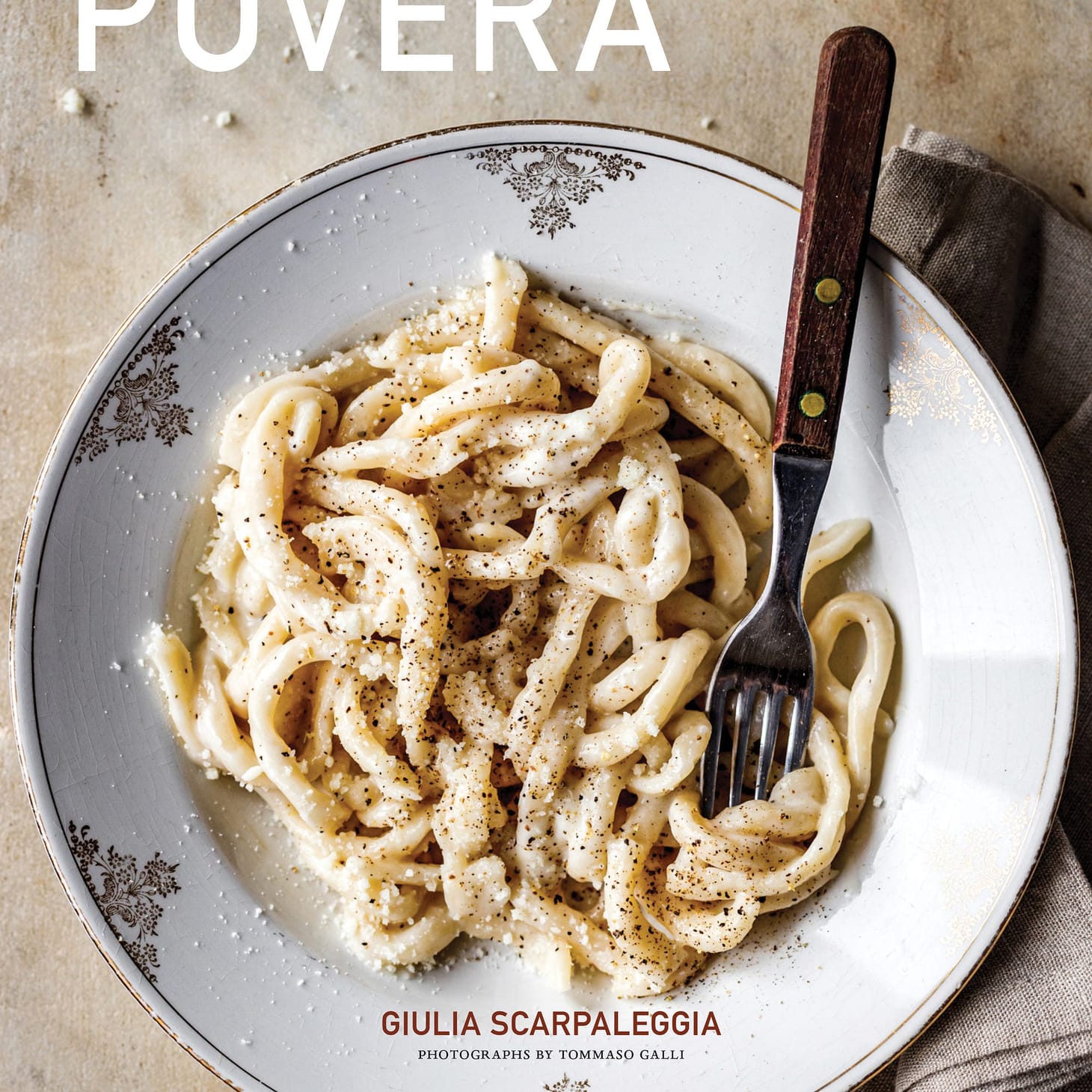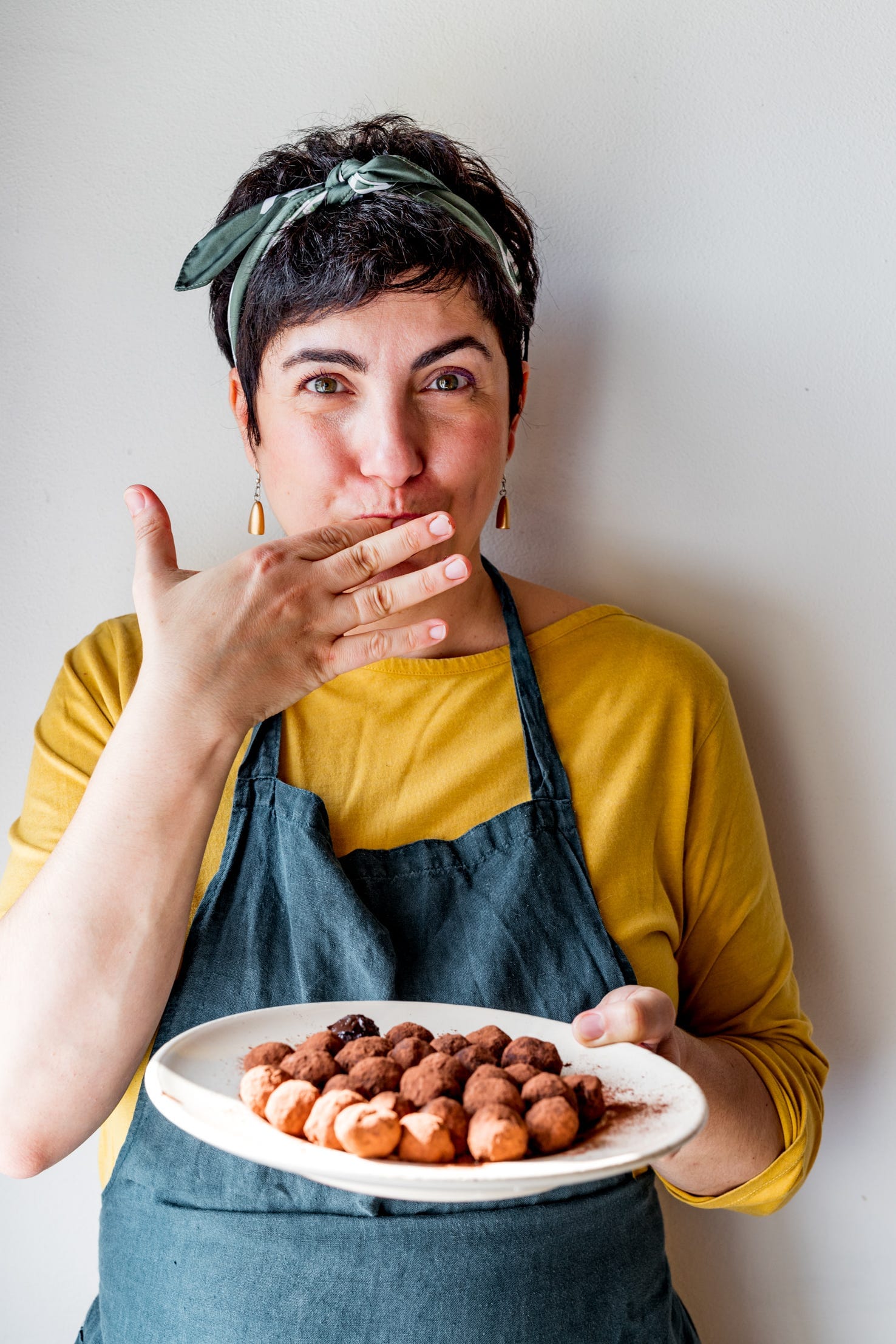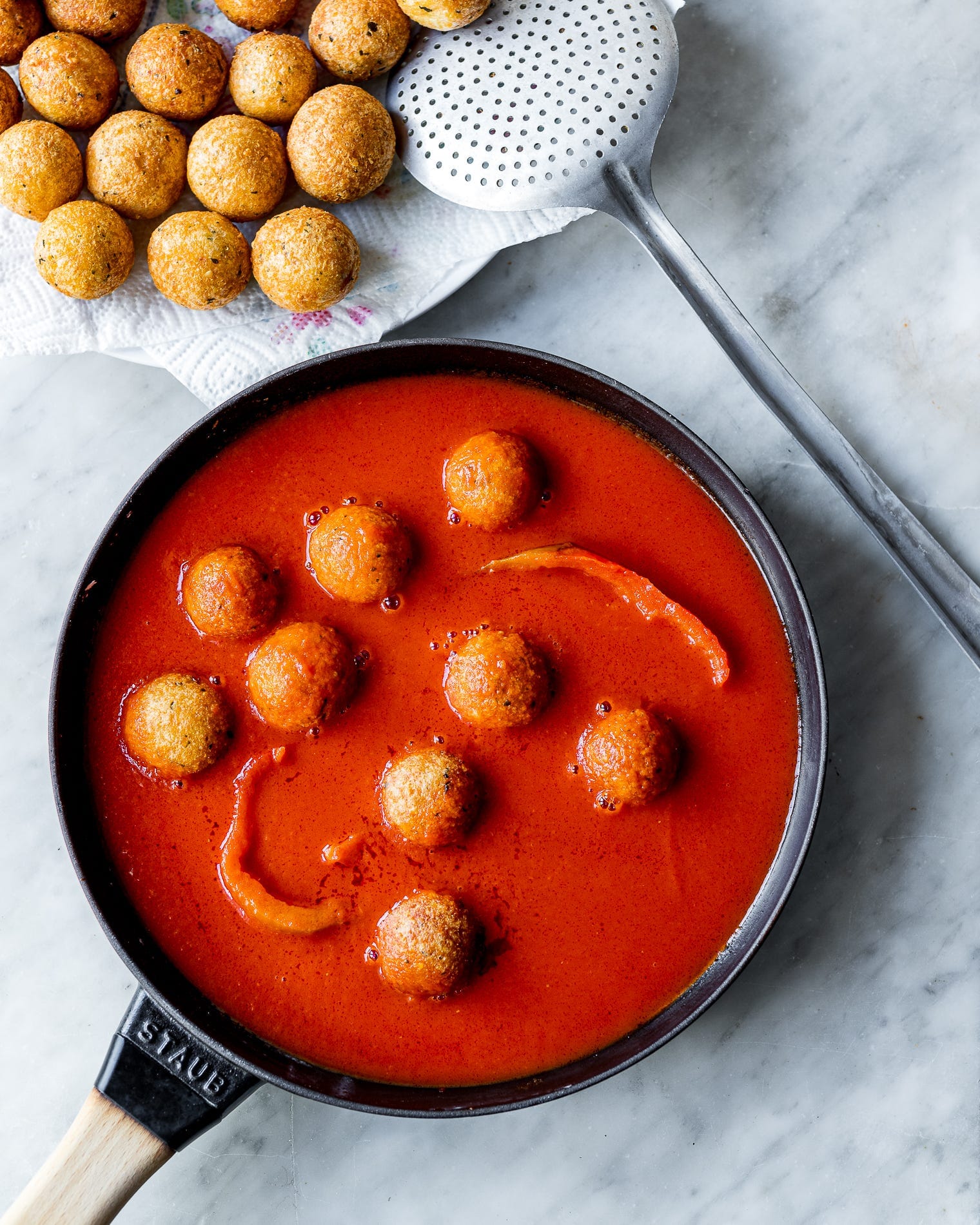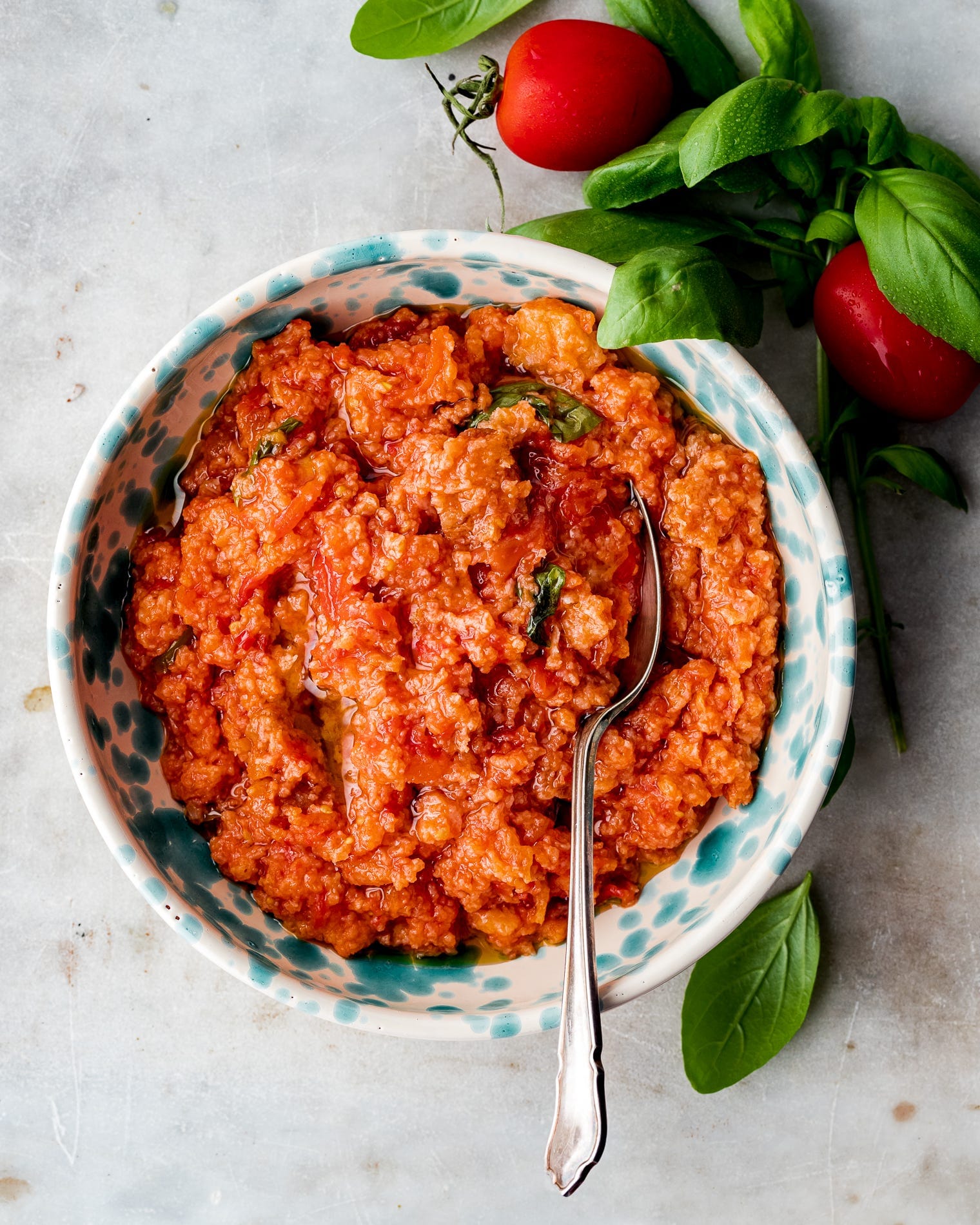Giulia Scarpaleggia's 'Cucina Povera'
Two thrifty, bready recipes

Table of Contents
Breadcrumb month continues with two recipes from Giulia Scarpaleggia's brand new book Cucina Povera, which is all about the Italia l’arte dell’arragianrsi, aka the “art of making do with what you’ve got.” In other words, making the most of humble, readily-available/local ingredients, and leftovers (including stale bread and breadcrumbs, of course). I’ve had a copy of it for a little while, and it is a wonderful addition to anyone’s cookbook library, Italian or otherwise.

Giulia is a Tuscan-born and -bred home cook, food writer, podcaster, and cooking school instructor who has written five cookbooks in Italian. She’s also behind the excellent newsletter, Letters from Tuscany, which you will probably want to sign up for:

Letters from TuscanyStories and recipes from my kitchen in Tuscany | Seasonal, uncomplicated, nourishing vegetable-forward food by Tuscan food writer and cookbook author Giulia ScarpaleggiaBy Giulia Scarpaleggia
Below you’ll find recipes from the book, for Pallotte cacio e ova (Cheese-and-Egg Balls Stewed in Tomato Sauce), and Pappa al pomodoro (Tomato and Bread Soup), which is one of her personal favorite recipes. And both call for stale bread or breadcrumbs.
(Note: The pappa recipe calls for saltless Tuscan bread, which I realize most of you will not have. I’ve notated that you can also use any other crusty bread, which I’m pretty sure most of you do have. Just be sure to use the lower amount of salt indicated, since your bread will—unlike Tuscan bread—have salt in it already.)
I’ve also got an extra copy of Cucina Povera to send to one lucky paid subscriber, chosen at random a week from today. Just leave a comment below with your favorite way to repurpose leftover ingredients—bonus points if it involves bread in one way or another.
—Andrew
Pallotte cacio e ova/ Cheese-and-Egg Balls Stewed in Tomato Sauce


Tomato And Bread Soup2.68MB ∙ PDF fileDownloadDownload
Pallotte are soft, spongy balls made with day-old bread and grated cheese, simmered in a very smooth tomato sauce. Serve them in small bowls, with plenty of crusty bread to mop up the sauce.
Serves 4 to 6 as a starter
For the Tomato Sauce
¼ cup/60 ml extra-virgin olive oil
2 cloves garlic, crushed and peeled
½ celery stalk
¼ red bell pepper, seeded
3 cups/720 ml tomato puree (passata)
2 cups/480 ml water
Fine sea salt
For the Pallotte
7 ounces/200 g day-old bread, crusts removed
7 ounces/200 g Parmigiano-Reggiano, grated
3½ ounces/100 g Pecorino Romano, grated
4 large/200 g eggs, lightly beaten
½ clove garlic, minced
2 tablespoons minced fresh flat-leaf parsley
4 cups/1 L vegetable or other neutral oil for deep-frying
Crusty bread for serving
Prepare the sauce: In a large frying pan, heat the olive oil over medium-low heat. Add the garlic, celery, and red pepper and cook, stirring, until the garlic is golden and fragrant, about 2 minutes. Pour in the tomato puree and water and bring to a simmer, then reduce the heat to low and simmer for about 20 minutes, until the sauce is glossy but still quite liquid. Taste and season with salt; set aside.
Make the pallotte: In a medium bowl, soak the bread in cold water to cover for 5 minutes. Check the bread; it should have become soft again. If it’s still a bit hard, let it soak for a few minutes longer.
Remove the bread from the water and squeeze it to remove the water. Crumble it into a large bowl. Add the grated Parmigiano-Reggiano and pecorino, then add the eggs, garlic, and parsley. Mix the ingredients together, squeezing them with your hands, until a soft, moist, slightly crumbly dough forms, then continue to mix until it no longer sticks to your hands.
To form the pallotte, scoop up ½ tablespoon of the dough and, with slightly wet hands, roll into a ball. Transfer to a rimmed baking sheet and repeat with the remaining dough; you should end up with about 3 dozen pallotte.
Pour the frying oil into a large high-sided pot set over medium-high heat. Set a wire rack on a rimmed baking sheet and place nearby.
When the oil registers 350°F/175°C on a deep-frying thermometer, add the pallotte to the pot, cooking them in batches; if you crowd the oil, the temperature will drop and the pallotte will absorb too much oil. As you add them, the pallotte should roll over on themselves and dance in the oil; fry until golden brown, about 5 minutes, then transfer to the wire rack. Fry the remaining pallotte in batches, allowing the oil to return to temperature between batches.
Remove the garlic, celery, and pepper from the tomato sauce and heat it until hot. Add the pallotte to the sauce and simmer for 5 minutes. Serve immediately.
Notes: The pallotte should be simmered in the tomato sauce just before serving, or they will become soggy. But you can fry the pallotte in advance and store them in the fridge, then cook them in the tomato sauce when ready to serve.
Use any leftover sauce to dress a bowl of spaghetti: the pallotte infuse the sauce with a cheesy flavor, making it a great choice for a quick meal.
Pappa al pomodoro / Tomato and Bread Soup


Cheese And Egg Balls Stewed In Tomato Sauce13MB ∙ PDF fileDownloadDownload
Pappa al pomodoro is one of the most representative recipes of Tuscan cucina povera. The main ingredients are stale Tuscan bread—a bread that, according to the rest of Italy, is bland, because it is made without salt—and fresh tomatoes (but a can of good peeled tomatoes works just as well).
Pappa al pomodoro recipes differ from region to region: In Florence, the soup is bright red, as the bread is cooked in tomato puree with a battuto of minced onion, carrot, and celery as the flavor backbone. In Siena and the Chianti area, it is paler, made with just a few chunks of fresh tomatoes, along with the stale bread, and garlic instead of the onion. As for the aromatics, fresh basil is the most common herb, but near Pisa, they tend to use wild mint.
In summer, when ripe tomatoes cram the stalls of farmers’ markets, make this soup with ripe Roma tomatoes. If you like, you can quickly peel them so that your pappa al pomodoro will be much more velvety. To do so, cut an X in the bottom of each tomato, plunge them into a pot of boiling water for 30 seconds, and then use a slotted spoon to transfer them to a bowl of cold water to cool; this will help the skins release from the tomatoes. This version of pappa al pomodoro is a thick, dense, porridge-like soup, glistening with extra-virgin olive oil and perfumed with the heady smell of basil. It is comfort food for many people in Tuscany, one of those dishes that wakes up childhood memories and soothes like a warm embrace.
Serves 4 to 6 as a first course
One 28-ounce/794 g can whole peeled tomatoes or 8 ripe
Roma (plum) tomatoes, peeled if desired (see headnote)
½ cup/120 ml extra-virgin olive oil
2 cloves garlic, finely chopped
¼ teaspoon red pepper flakes,
plus more to taste
4 thick slices (about 12½ ounces/355 g) stale Tuscan Bread1 (page 302)
1 tablespoon tomato paste
2 cups/480 ml warm water
2 teaspoons fine sea salt, plus more to taste2
A handful of fresh basil leaves, torn
Pour the tomatoes into a large bowl and crush them with your hands.
In a large pot, warm ¼ cup/60 ml of the olive oil over low heat. Add the garlic and red pepper flakes and cook, stirring, until the garlic is fragrant and golden, about 2 minutes. Pour in the tomatoes (set the bowl aside), increase the heat to medium-low, and cook, stirring occasionally, until the tomatoes start to break down into a sauce, about 15 minutes.
While the tomatoes cook, break the stale bread slices into big chunks and place in the tomato bowl. Add cold water to cover and let stand until the bread has soaked up enough water to become soft again, about 10 minutes.
Remove the bread from the water, squeeze it between your hands to remove the excess water, and crumble into the tomato sauce. In a large measuring cup, stir together the tomato paste and warm water until well combined, then add to the pot. Season with the salt, reduce the heat to low, and cook for about 10 minutes, stirring vigorously from time to time with a whisk to give the pappa al pomodoro its typical creamy texture.
Remove from the heat, add the torn basil leaves and the remaining ¼ cup/60 ml olive oil, and stir to combine. Season to taste with additional salt as necessary.
Let the soup stand at room temperature for at least an hour to allow the flavors to mingle, then serve at room temperature or reheat gently over
low heat to serve warm.

Excerpted from Cucina Povera by Giulia Scarpaleggia (Artisan Books). Copyright © 2023.
wordloaf Newsletter
Join the newsletter to receive the latest updates in your inbox.




